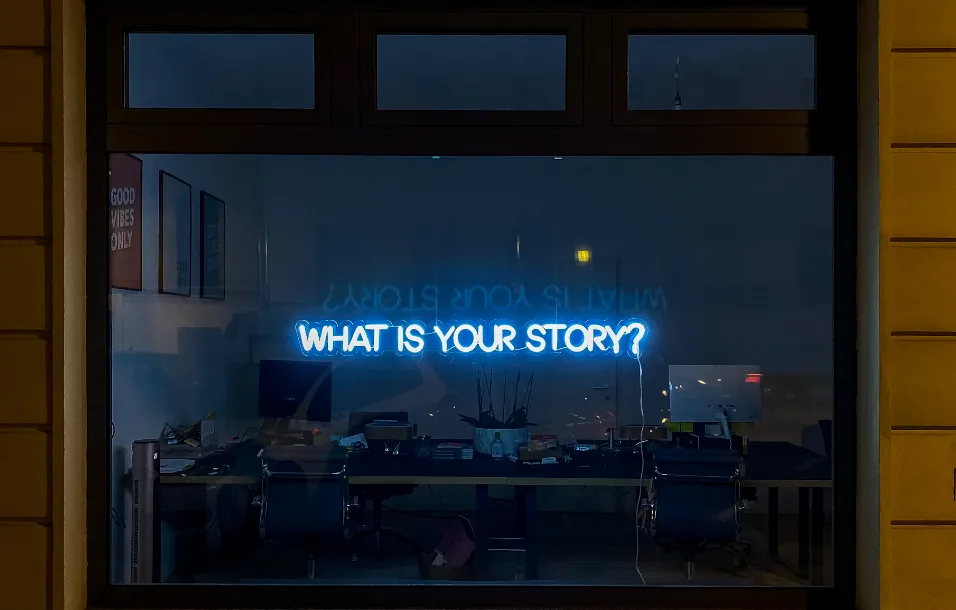How to Write a Story: The Power of Great Storytelling with Scott Galloway
In a captivating conversation on the “How I Write” podcast with David Perell, Scott Galloway shared profound insights about the fundamental importance of storytelling in business, personal success, and education.
His perspective challenges conventional wisdom about what skills matter most in today’s rapidly changing world.

Why Storytelling Matters
According to Galloway, if there’s one timeless skill worth mastering, it’s storytelling.
He presents this view in stark contrast to current educational trends:
“Remember how ridiculous it was in some of the top private schools – they were teaching Mandarin and then they replaced civics and history with computer science, which is how we get mendacious like Mark Zuckerberg… but if you could give any skill to your kids that could stand the test of time, hands down it’s storytelling.
I don’t care if you’re Maya Angelou or Jeff Bezos – they’re great storytellers.”
The impact of storytelling extends across all aspects of life:
- Convincing investors to back your vision
- Persuading potential candidates to join your team
- Getting viewers to listen to your message
- Building authentic connections with audiences
- Even something as simple as convincing someone to have coffee with you
- Creating compelling investment narratives
- Developing strong personal and professional relationships

The Foundation: Building Storytelling Skills
1. Practice and Fearlessness
Galloway emphasizes that the core of developing storytelling abilities lies in consistent practice and overcoming fear. He shared a personal parenting approach that illustrates this:
“When my boys were younger, when we left the house I just kind of had one rule: we can’t go back until you speak to a stranger… my oldest boy had no problem and my youngest a couple times we’d have to sit outside the house and it was kind of dramatic.”
Key exercises he recommends:
- Initiating conversations with strangers
- Speaking to people in line (both in front and behind you)
- Learning how to “open” or start conversations naturally
- Practicing in low-stakes situations
- Embracing the possibility of rejection
- Building confidence through repeated exposure
He notes that this practice:
“Releases a good hormone and you learn how to open… I think the key is learning how to open, like how to start.”

2. Finding Your Authentic Voice
Storytelling isn’t one-size-fits-all. As Galloway notes:
“I think MC Jagger’s approach to storytelling is much different than Malcolm Gladwell’s.
I think it’s just sort of finding how you communicate and tell stories.”
He illustrates this with a fascinating example:
“We had this guy who spoke before me in Ted, this kind of 70 or 80 something year old astronomy professor, and he was in a bad suit and had hunched shoulders, but he was kind of adorable…
I’m pretty sure he purposely crumples his suit because I think that’s part of his brand, part of the schtick.”
Authenticity in storytelling comes from:
- Discovering your unique communication style
- Developing your personal brand
- Understanding your natural rhythm and cadence
- Finding the right platforms and audiences for your voice
- Embracing your quirks and characteristics
- Creating a consistent persona that resonates with your audience

The Mechanics of Effective Storytelling
1. Core Message Development
The foundation of any compelling story is a strong central narrative.
Galloway provides a powerful example:
“I think that young people… we have a purposeful transfer of opportunity prosperity and wealth from young to the old and I think it’s purposeful.
I don’t think it happened accidentally… the incumbents are creating this illusion that oh it’s network effects or globalization.
They have weaponized government and decided young people pay social security and give it to me, young people make it harder to get a degree or get a house such that my degree and my house goes up in value.”
His approach to developing narratives includes:
- Identify the central point or narrative
- Look for underlying patterns
- Challenge conventional wisdom
- Find compelling angles that resonate
- Back it up with supporting data
- Gather relevant statistics
- Find supporting examples
- Build a logical framework
- Choose the appropriate medium for delivery
- Consider your audience
- Match content to platform
- Optimize for engagement
- Practice and refine your delivery
- Test different approaches
- Gather feedback
- Iterate and improve

2. The Power of Narrative in Business
Galloway highlights how narrative shapes business success, using modern examples:
“Look at the last few earnings calls for different companies – the companies that are able to say ‘we’re leveraging AI, we’re at the center of AI’ see the stock go up 10 or 12%.
And then the companies that feel like they’re a victim of AI saying ‘oh AI is impacting, we’re seeing some impacts of AI’ on our business…”
He points out that companies that can craft compelling narratives about their future:
- Gain access to cheaper capital
- Can invest at greater rates than competitors
- Eventually establish market dominance
- Create substantial shareholder value
- Shape market perception
- Control their destiny
Using Loom as an example:
“Loom, the software company, they’re valued more than the entire category of ‘hey we’re going to record a video of screen sharing’… if you can have a narrative, if you can use the right words, kind of get aligned with the controlling narratives arrows of progress in society, you can have investors, shareholders, employees feel that there’s a certain inevitability to your success.”

3. Timing and Rhythm
Effective storytelling isn’t just about content—it’s about delivery.
Galloway shares several tactical approaches:
“In my TED talk… I stop and I put up a picture of that mob chic photo of Jeff Bezos and Lauren Sanchez and then you just pause… and you create creative tension and you stop and they’re all like waiting for you to say something and finally you say ‘I just like this slide, it has no context or relevance’ and they laugh.”
Key techniques include:
- Using quick, punchy anecdotes rather than long-form stories
- Creating creative tension through strategic pauses
- Interrupting cadence to maintain engagement
- Incorporating authentic emotional moments
- Using humor to break tension
- Building and releasing dramatic tension

Advanced Storytelling Techniques
1. Emotional Connection
“If you can make people really feel something… if you can tap into a dad in the audience and get them to slow down for a moment and say ‘all this is just a means to the ends right and the ends is deep and meaningful relationships with your kids’… you’ve won.”
Galloway emphasizes that emotional resonance trumps business insights. Successful storytelling should:
- Tap into universal human experiences
- Create moments of reflection
- Connect with deeper meaning
- Evoke genuine emotional responses
- Build lasting connections
- Create memorable moments
He elaborates:
“Everything that’s instilled in us is to feel a set of emotions that help us survive and propagate, so that’s the key – people want to feel some sort of sensation or emotion.”
2. Authenticity and Brand Building
Galloway advocates for authentic self-expression in storytelling:
“I’m a profane and vulgar person – no kidding, it’s not an act, I’m genuinely profane and vulgar. I lose some clients…
Walmart invited me a few times to speak and after a while they’re just like ‘dude, you’re not only in the Bible Belt, you’re on the buckle of the Bible Belt.'”
He emphasizes that strong brands:
- Know who they are and aren’t for
- Maintain consistency in voice and message
- Accept that they won’t appeal to everyone
- Build loyal followings through authenticity
- Create clear differentiation
- Stand firm in their identity
3. Practical Applications in Modern Context
Modern storytelling requires understanding:
- The growing importance of PR and communications :
“The number of comms and PR people at these companies has gone up sixfold because they realize that shaping and crafting and controlling the narrative is hugely important.” - How to leverage current trends (like AI) in your narrative
- The value of quick, impactful messaging
- The role of visual elements and presentation
- The importance of timing and context
- The power of platform selection

Key Guidelines on How to Write a Story Well
- Practice Regularly
- Seek out opportunities to tell stories
- Engage with strangers
- Find your unique voice
- Build confidence through repetition
- Learn from feedback
- Develop your style
- Focus on Emotional Impact
- Prioritize making people feel something
- Connect with universal human experiences
- Use authentic emotional moments
- Create memorable experiences
- Build lasting connections
- Tap into shared values
- Master the Technical Elements
- Learn to craft clear central narratives
- Develop strong opening techniques
- Perfect your timing and delivery
- Use appropriate pauses and emphasis
- Create tension and release
- Structure stories effectively
- Stay Authentic
- Develop your unique style
- Accept that you won’t appeal to everyone
- Be consistent with your personal brand
- Embrace your characteristics
- Stand firm in your identity
- Build genuine connections

Conclusion
The ability to tell compelling stories has become more crucial than ever. Whether in business, personal relationships, or public speaking, mastering the art of storytelling can open doors and create opportunities.
As Galloway demonstrates, the key lies in combining authentic self-expression with practiced technique, always focusing on creating genuine emotional connections with your audience.
The most powerful stories aren’t just about conveying information—they’re about making people feel something, challenging their perspectives, and creating memorable moments that resonate long after the story ends.
In an age where technical skills can become obsolete overnight, the timeless art of storytelling remains one of the most valuable abilities one can develop.
(Source: the “How I Write” podcast with David Perell featuring Scott Galloway)




